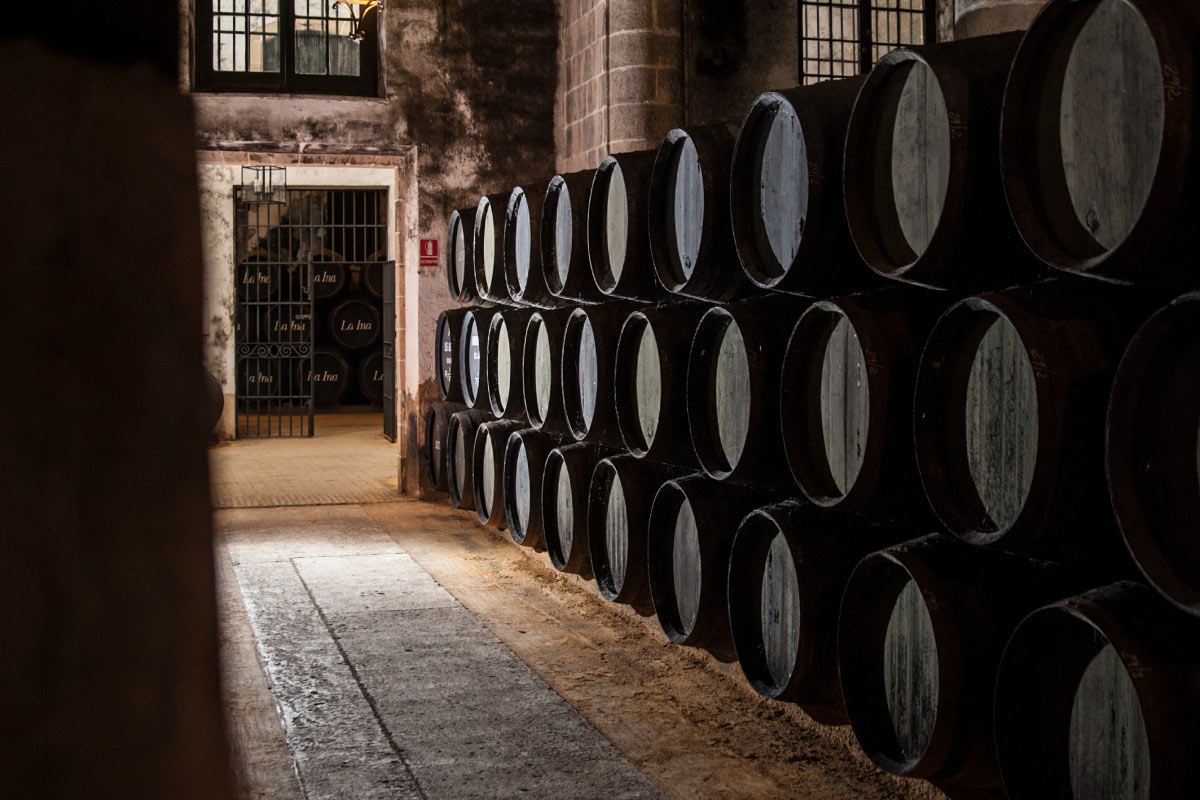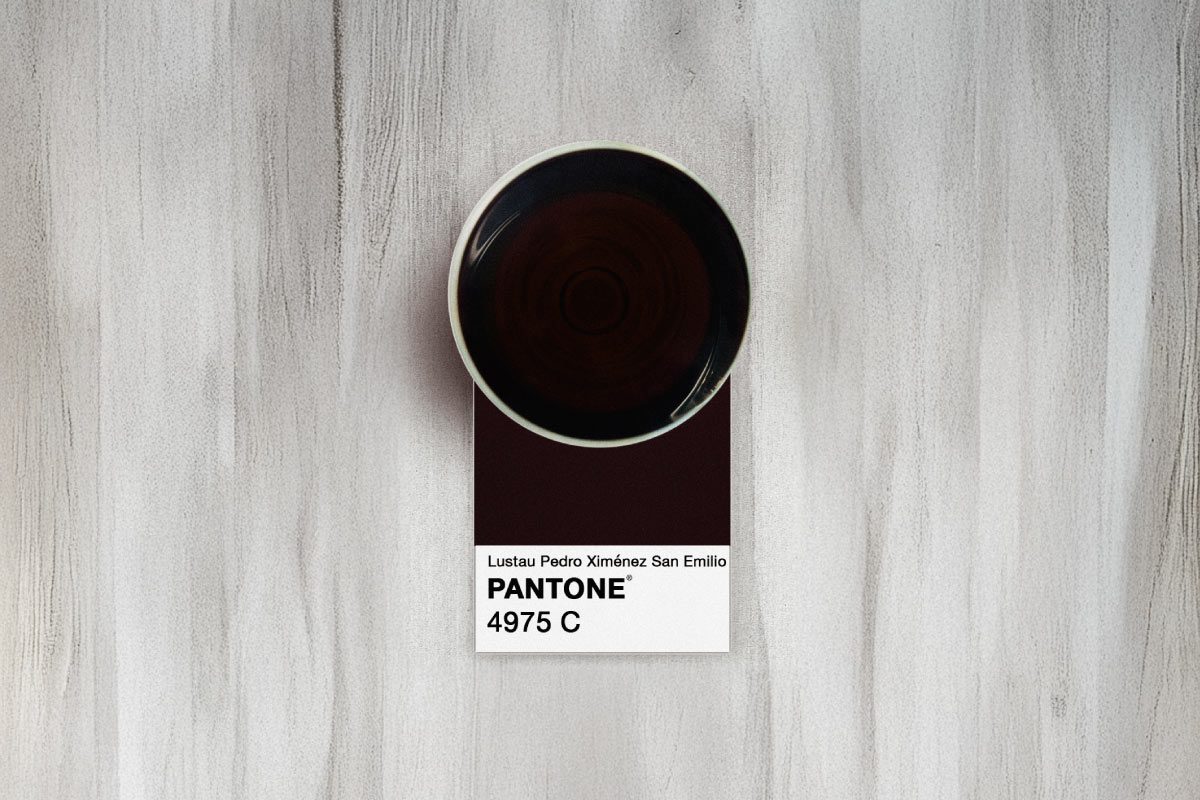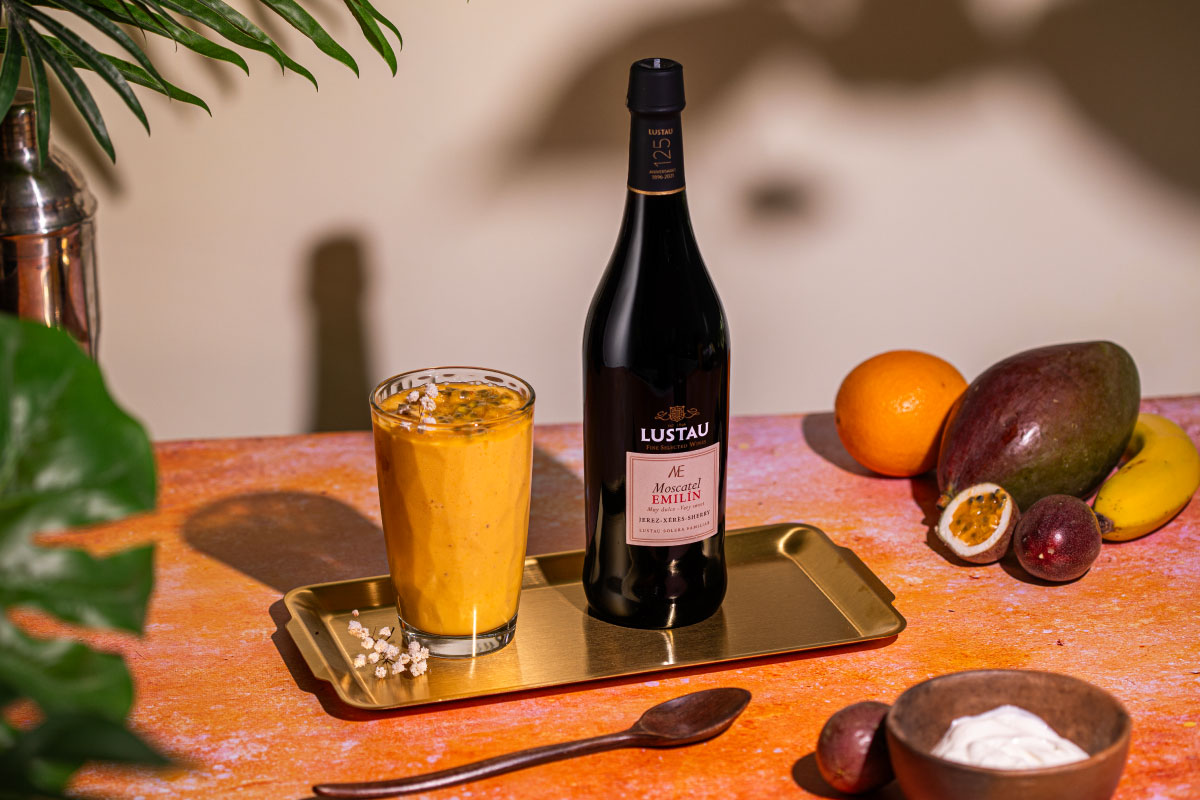Pedro ximénez, often abbreviated simply as “PX,” represents one of the most luscious and emotive expressions within the sherry spectrum. Revered for its luxurious sweetness, velvet texture, and astonishing depth of flavor, PX is both a symbol of Spain’s viticultural heritage and a modern-day indulgence that transcends many different culinary applications and ways of consumption. Behind its dark, mahogany hue lies a winemaking story shaped by patience, craftsmanship, long, steady oxidized aging, and sunlight itself.

Xeres de la Frontera. Engraving by Joris Hoefnagel, 1570.
THE ORIGIN AND HISTORY OF PEDRO XIMÉNEZ
The roots of pedro ximénez, as a wine, trace back centuries, to a time when Andalusian vineyards were shaped by Moorish agricultural practices and later enriched by European monastic viticulture. The grape variety itself—pedro ximénez—likely found its way to southern Spain through monks returning from Central Europe in the 16th century. Although its origin is still to be confirmed, what is certain is that over time, it adapted perfectly to the Andalusian region’s warm climate and chalky albariza soils, particularly in Montilla-Moriles and Jerez.
By the 18th century, wines made from PX had gained renown across Europe for their rich character and longevity. They often traveled by sea in wooden casks, their flavor deepening through exposure to heat and oxygen. Merchants and consumers alike came to associate pedro ximénez not only with sensory pleasure but also with craftsmanship and rarity. Within the former Sherry Triangle—Jerez de la Frontera, El Puerto de Santa María, and Sanlúcar de Barrameda—the style evolved into a distinctive identity, defined by both place and process.
Today, px remains a hallmark of traditional Andalusian wine crafting: a labor-intensive, sun-drenched wine that encapsulates centuries of knowledge and respect for nature’s rhythm.
THE ORIGIN OF THE NAME “PEDRO XIMÉNEZ”
The origin of the name pedro ximénez has been the subject of several historical interpretations. One traditional narrative attributes the name to a German or Flemish soldier, often identified as “Peter Siemens,” who is said to have introduced the grape thanks to travelling monks to southern Spain in the 16th century. According to this account, his name was progressively adapted to the Castilian (old Spanish) form “Pedro Ximénez.” Although widely repeated, this theory lacks documentary support and is generally regarded as apocryphal. A more credible explanation proposes that the variety was named after a local cultivator or landowner bearing the surname Ximénez or Jiménez, both of which are well established in Andalusia. This interpretation aligns with common naming practices in viticulture, where grape varieties frequently carry the names of influential growers or families associated with their dissemination.
Contemporary ampelographic and genetic studies provide a further perspective, linking this variety to Hebén (also known as Gibi), an ancient “Andalusí” grape widely cultivated during the medieval period. This evidence suggests that the variety has a deeply local origin, regardless of later legends.
Taken together, these theories indicate that the name likely emerged from regional usage rather than foreign introduction, with the genetic record pointing to a longstanding presence in the Iberian Peninsula.
Discover another iconic variety used for sweet wines in the region: moscatel.
THE WINEMAKING PROCESS BEHIND PX SHERRY
The elaboration of pedro ximénez wine is a long process that masterfully blends two key crafting stages, demanding both precision and expertise.
THE PEDRO XIMÉNEZ GRAPE: CHARACTER AND CULTIVATION
The px grape is a white variety that thrives in the sunny vineyards of southern Spain. Compared to palomino, it contains a higher level of natural sugar and a higher acidity, which makes it ideal for sweet wine production. It ripens early and requires meticulous care, as is the same skin that facilitates dehydration and also makes it susceptible to rot if humidity rises.

In perfect conditions the vine yields grapes with concentrated personality and remarkable aromatic potential.
SUN-DRYING (ASOLEO): CONCENTRATING NATURAL SWEETNESS
After harvest—typically at the end of august or early september—the grapes destined for px sherry are laid out under the sun in a centuries-old technique known as “asoleo”. This process can last from seven to fifteen days, depending on temperature and humidity.
The bunches are placed on esparto mats, turned carefully to ensure even drying, and shaded during the hottest hours to prevent scorching.

As the days pass, water evaporates from the berries, concentrating sugars, acids, and aromatic compounds. The grapes darken, their skins wrinkling and their flavors evolving from fresh fruit to ripe fruit. The transformation is profound: the juice yield diminishes drastically, but what remains is a dense, nectar-like must with immense texture and depth.
“Asoleo” can perfectly be described as an emotional milestone in px production—a visual expression of time, wind, light, and patience.
FERMENTATION DYNAMICS AND RESIDUAL SUGAR
Once the drying process is complete, the grapes are pressed to extract their scarce but intense must. Fermentation in pedro ximénez wines can be directly compared to port wines, as they are always partially fermented. Due to its extremely high sugar content, full fermentation is nearly impossible. The natural yeasts become inactive once alcohol levels reach around 5–6%, leaving most of the sugar unfermented.
The result is a partially fermented must with extraordinary richness but with an initial alcohol content too low for stability. To preserve it, winemakers proceed to fortification—a defining step that protects both the flavor and the integrity of the wine.
FORTIFICATION: PRESERVING AROMA, TEXTURE, AND SWEETNES
Fortification stabilizes the partially fermented must by adding grape spirit until the wine reaches approximately 15–17% alcohol by volume. This halts any remaining fermentation, preserving the residual sugar that gives px its intense sweetness and velvety texture.
Beyond preservation, fortification plays an “aesthetic” role: it frames the wine’s aromatic identity. The grape spirit integrates gradually with the concentrated must, unlocking layers of dried fruit, toffee, molasses, and subtle spice.
AGING UNDER OXIDATIVE CONDITIONS
Pedro ximénez matures exclusively through oxidative aging. Unlike fino or manzanilla, no protective layer of “flor” yeast develops; instead, the wine interacts slowly with oxygen through the pores of the cask. This exposure deepens the color from deep amber to almost black and thickens the texture to a syrup-like consistency.
Over years—often decades—of slow and consistent aging, the wine develops extraordinary aromatic complexity: notes of roasted coffee, licorice, cocoa, and dried figs. The sweetness becomes more integrated, balanced by a high acidity and delicate tannins extracted from the oak.
The casks used are typically old American oak barrels, seasoned sometime for decades to minimize wood influence. Their purpose is not to impart new flavors but to facilitate gentle micro-oxidation and the slow concentration of essence.
Get to know what makes a sherry cask an iconic aging vessel
SACA, CRIADERAS Y SOLERA: CRAFTING CONSISTENT EXCELLENCE
Following fortification, the wine re-enters the solera system— the dynamic aging method created in the DO centuries ago. Younger wines are progressively blended with older ones, ensuring consistency and complexity unparalleled to the rest of the wine world. This stage can extend for several years, with the length of aging significantly influencing the wine’s depth and personality.

FINAL CLASSIFICATION AND BOTTLING
After extensive aging— sometimes decades—this style of wine reaches its final stage. Capataces assess its concentration, balance, acidity and complexity before bottling. Some pedro ximénez may be used to create brand new styles of wines when blended with dry wines (such as medium or cream). Some others are eventually bottled unblended. At Lustau, the finished pedro ximénez is always bottled with minimal or no filtration and treatment, to preserve its unique character and respect the genuineness of its identity.
THE WINEMAKING PROCESS BEHIND PX SHERRY
SIGNATURE AROMAS: RAISINS, FIGS, TOFFEE, COCOA
Pedro ximénez captivates with an enormous bouquet that evokes sophistication and gentleness. The dominant aromas—raisins, figs, and dates—intertwine with hints of toffee, caramel, cocoa, and roasted coffee beans. On the palate, the texture is velvety, enveloping, with a sweetness that feels natural rather than cloying thanks to its balanced acidity.
As it warms in the glass, new dimensions emerge: touches of orange peel, licorice, tobacco leaf, and candied nuts. This wine style is almost endless on the palate, echoing with notes of molasses and dark chocolate.
Despite its intensity, px retains a remarkable sense of harmony and grace.

HOW PX DIFFERS FROM MOSCATEL AND CREAM SHERRIES
When it comes to comparing pedro ximénex with other styles, this wine it occupies the sweetness side of the whole spectrum in the region. It is, by far, the darkest, most intense, sweet wine of all, even compared with moscatel or cream, wines known for their sweet profile.
Moscatel: is the most vivid and floral of all. Unlike pedro ximénez, which is typically richer and more robust, moscatel retains the crisp, floral notes of the fresh moscatel variety while introducing layers of oxidative complexity.

Cream, on the other hand, is crafted through a meticulous coupage of oloroso and pedro ximénez, ending with a different personality.

LUSTAU PEDRO XIMÉNEZ COLLECTION
Lustau is respected for its diverse and versatile range of styles organized in different collections designed under certain concepts, profiles; suited for any palate. Lustau PX Collection explores different expressions of this fruity wine, showcasing variations in aging, and complexity.
Although all expressions are defined by Lustau’s accessible style each bottling provides different insights into the craftsmanship behind pedro ximénez style and its evolving character over time.
Lustau Pedro Ximénez San Emilio

Lustau Pedro Ximénez Murillo

Lustau Pedro Ximénez VORS

UNEXPECTED FOOD PAIRINGS AND SERVING SUGGESTIONS FOR PX
Traditionally considered a dessert wine, px offers endless versatility when approached with imagination. Its luscious sweetness finds equilibrium in contrast and texture.
It pairs magnificently with blue cheeses, where the wine’s sweetness tames the cheese’s pungency. Equally remarkable is its harmony with foie gras, roast duck glazed with citrus, or slow-cooked pork with caramelized onions. Px’s deep, molasses-like notes also complement dark chocolate desserts, vanilla ice cream, and tiramisu—classic yet elevated.
For something unexpected, try drizzling a few drops of px over aged Parmesan, roasted nuts, or even grilled eggplant. Its syrupy nature also makes it a beautiful reduction for sauces or marinades in savory dishes.
Serve px slightly chilled, around 12–14°C (54–57°F), in a white wine glass to allow the aromas to unfold. Once opened, it keeps well for months if sealed and refrigerated, slowly revealing more nuances with time.

PAIRINGS & CULINARY APPLICATIONS
Px’s expressiveness extends beyond the dining table or the cocktail glass, making it a perfect wine for a variety of occasions and moods. Its unparalleled set of aromas and flavors, and liveliness allows it to shine as a sophisticated wine. Ideal for intimate gatherings, relaxing moments, or even as a pairing with music—think slow jazz, lo-fi or blues—it invites you to explore its velvety personality in any context.
And for those looking to explore creative and unexpected pairings, discover how Lustau PX collection create a twist in sensations with everyday dishes (or some other more suited to a self-treat) with these inspiring combinations. Click on the visuals to discover more about the pairing ideas!
BEST COCKTAILS USING PEDRO XIMÉNEZ SHERRY
Though historically enjoyed on its own, px has become a highly rewarded prized ingredient in modern mixology. Bartenders appreciate its ability to introduce sweetness, viscosity, and complexity without relying on syrups or liqueurs.
Click on the visuals to discover more about the pairing and cocktail ideas!
THE CULTURAL AND GASTRONOMIC VALUE OF PEDRO XIMÉNEZ
Pedro ximénez earned its reputation not only through its flavor but through its storytelling power. In the 19th and 20th centuries, PX became a symbol of generosity and hospitality across Spain—served at family celebrations, Christmas gatherings, and moments of reflection. Its sweetness embodied abundance, its dark color signified maturity and time.
Unlike other dessert wines, px is not merely sweet; it carries a philosophical depth, a sense of memory into liquid form. Each bottle is a testament to the patience, the wisdom of aging, and the humility of the team who knows that nature leads the process.







